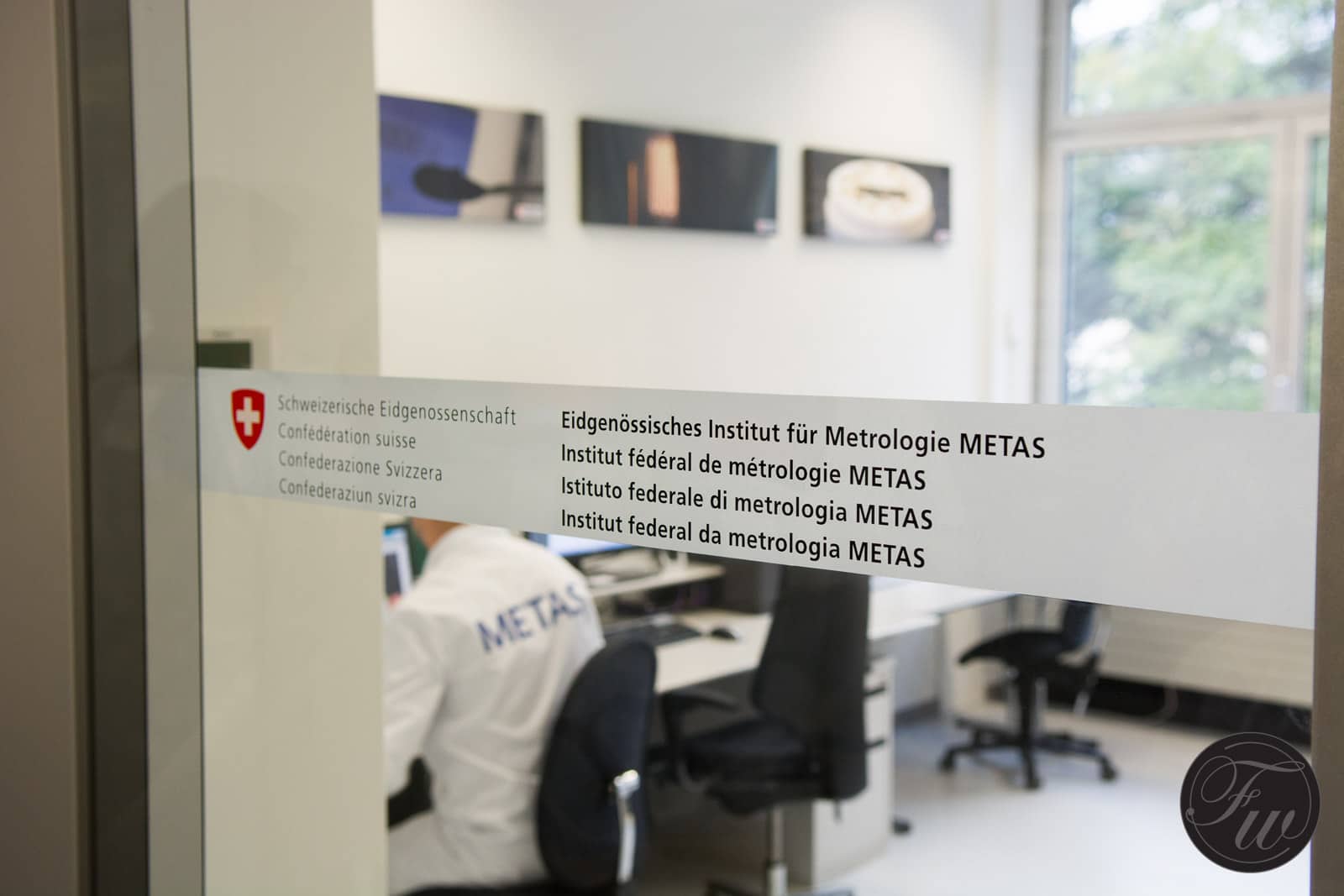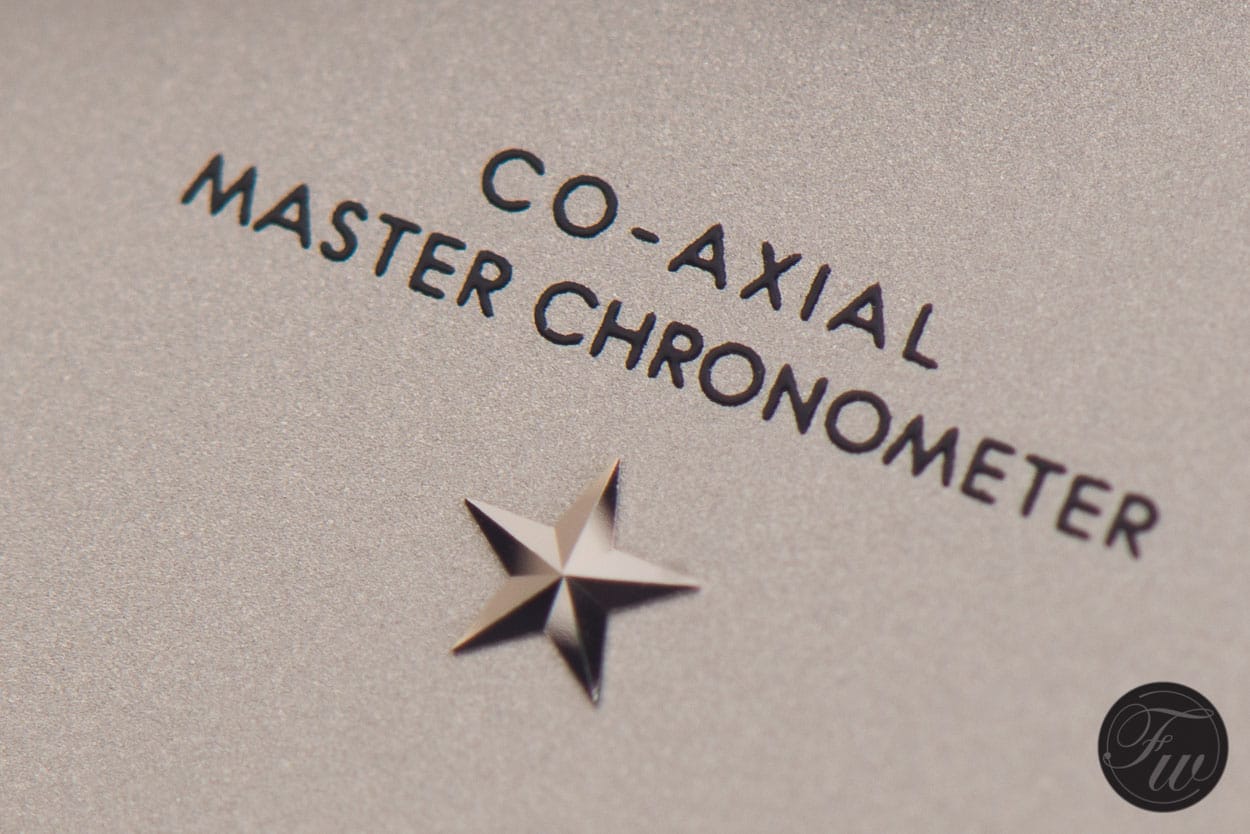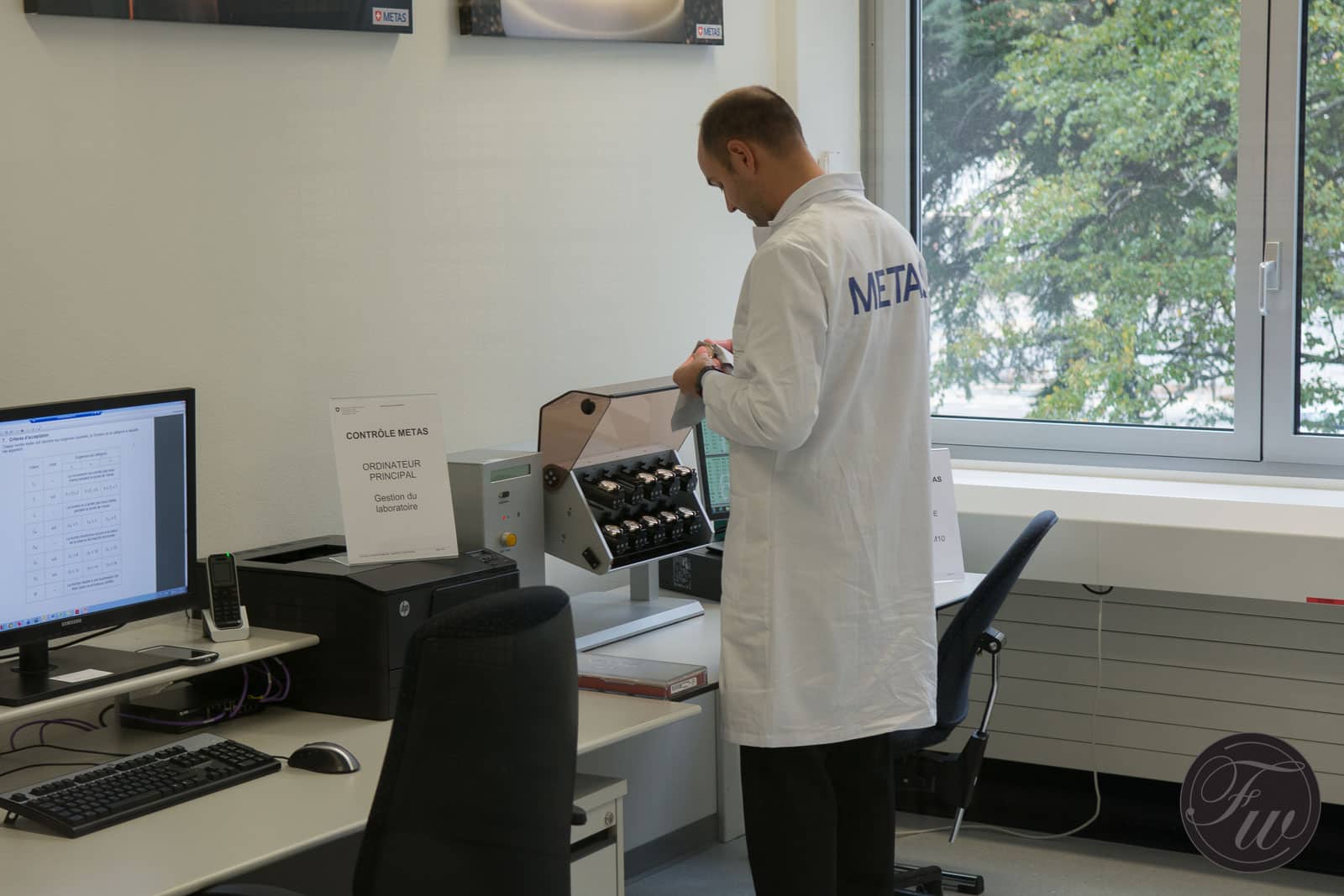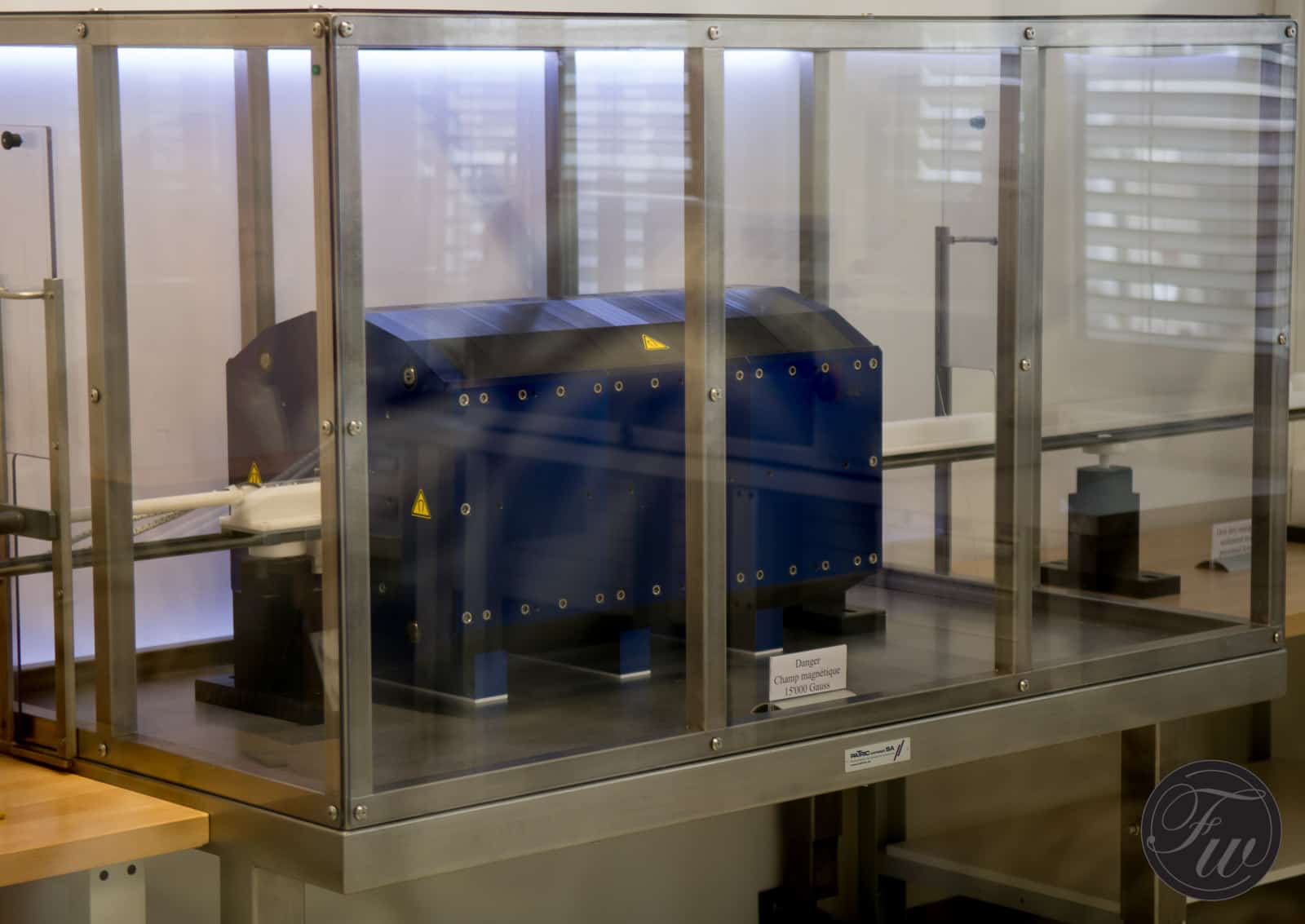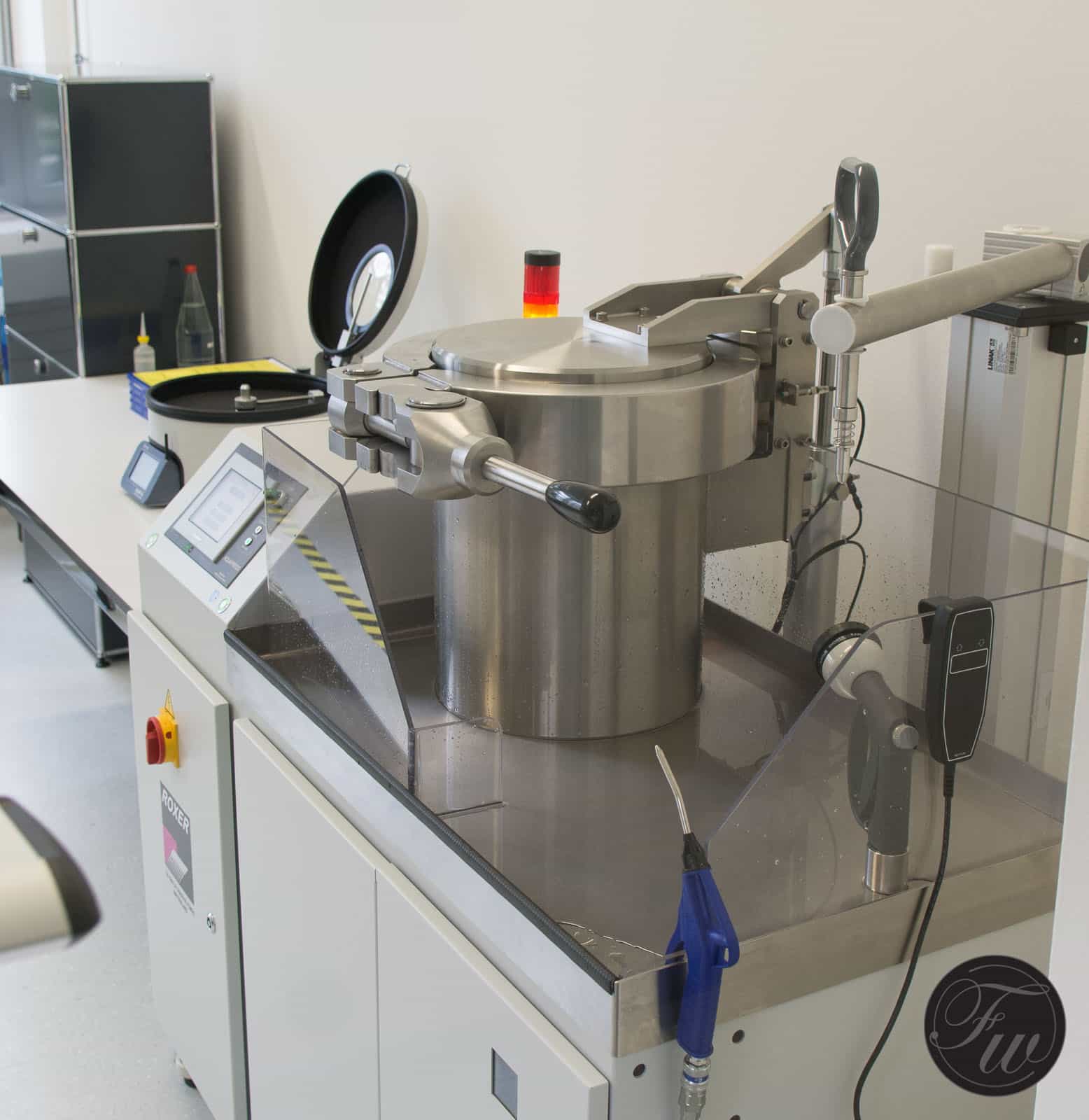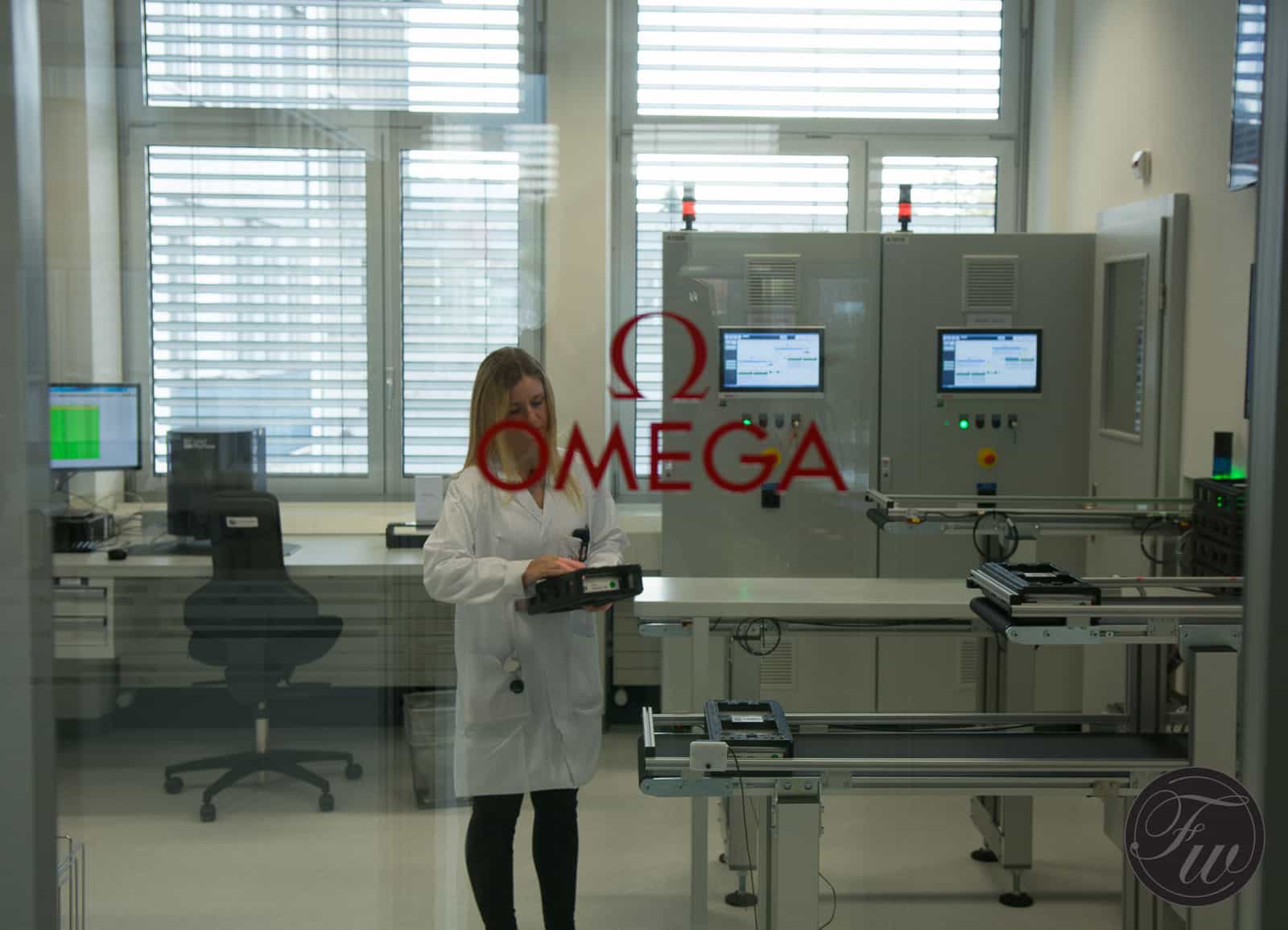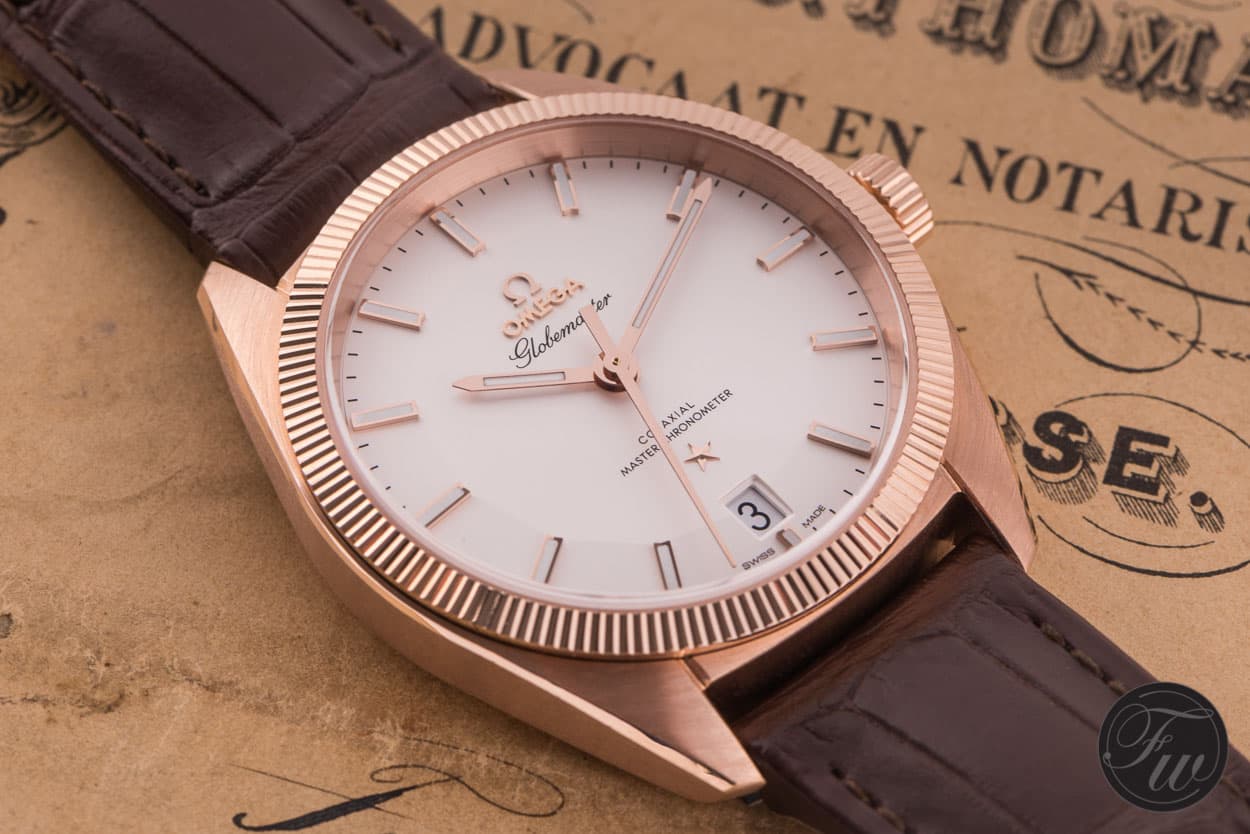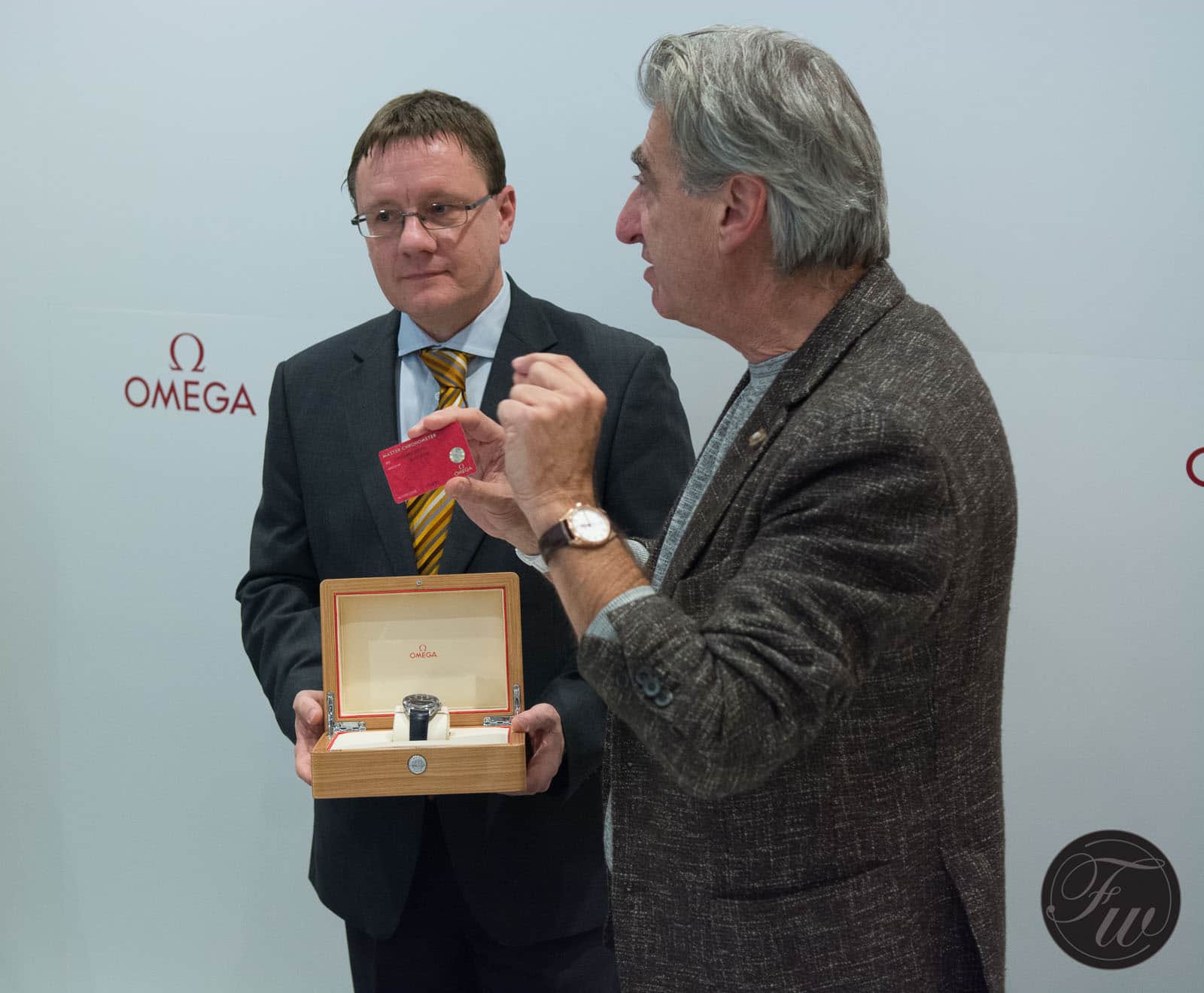Master Chronometer Explained – New Standards By Omega
On December 9th 2014, I joined Omega’s press conference where they introduced their new standards and certification and the important role of independent institute METAS. A long-winded and opinionated report about that announcement can be found here.
Since then, Omega has worked hard to set-up the processes needed to meet these new standards and to realize them in such way, that it can be done for high production numbers. I will get back to the details of these standards later on, but let me get a few mis-understandings out of the way about the name and the role of METAS and Omega with regards to the certification.
Chronometer, Master Chronometer, METAS: Confused?
When Omega announced these plans last year, they were using the ‘Officially Certified’ as definition for watches that were tested and certified. So that would mean that these watches would carry “Master Co-Axial, Officially Certified” on the dial. This changed during the course, as Omega decided – probably to end all confusion – that the new indication on the dial will be “Master Chronometer”. Chronometer because the COSC certification is still being executed for their movements and the pre-fix Master as they go a few steps further than that. Besides that, you can only use ‘Chronometer’ when a movement has been tested and certified by the COSC. It is a protected name.
Whether the combination, ‘Master Chronometer’, is a protected name is not entirely sure (probably there are some legal things pending at the moment) but Omega encourages other brands to also meet the new standards and have their watches certified by METAS in order to use the ‘Master Chronometer’ on the dials of their watches as well. According to METAS, other bands have showed interest in becoming compliant to these new standards as well, which would allow them to use ‘Master Chronometer’ as well. In my opinion it is an absolute necessity that Omega will bring some awareness around the use of ‘Master Chronometer’ to consumers, as any other watch brand that has chronometer-rated movements can use ‘Grand Chronometer, King Chronometer, Grandmaster Chronometer etc. etc.’ without having to comply to any other standards than those of COSC. It needs explanation in order to get the right amount of appreciation by consumers.
The role of METAS is quite clear (if you ask me, but my former life as an IT auditor might have something to do with that): Ensuring that Omega has all processes in place for the required test work on their Master Chronometer watches, ensuring that the test activities are performed accordingly to these processes and of course to make sure that the results meet the requirements of the Master Chronometer standards. This does not mean that METAS works on the Master Chronometer watches, this would be a conflict of interest, of course. METAS is an independent party, that only monitors the processes and activities that are related to testing the Master Chronometer watches. The department inside the Omega HQ building in Bienne that is responsible for testing the Master Chronometer watches has an office for METAS employees, who are there to do tests on samples and to monitor the test activities and processes. Just for clarification: All Omega Master Chronometer watches are tested, piece-by-piece. The certification is not based on sampling. In case a watch does not meet the requirements will be treated as an exception and needs to go back to a specific point of the production or assembly process to be fixed or adjusted. Watches that show a certain deviation when being re-tested by METAS (even when it is still within the requirements), need to be analyzed and explained.
One will understand that to set-up a workflow like that for an industrialized process requires quite a bit of capacity and investments. Omega was happy to show us their METAS Labs as well as their new T1 production facility of the 8xxx movements in Villeret. The METAS Labs are located inside the main building in Bienne and will stay there for at least another 12 months. Right next to the Omega HQ building, there is a construction site where a new building will arise to – among others – the METAS Labs will move to. The current capacity to test and certify the Master Chronometer watches is ‘only’ a few hundred per day, but this will then grow to larger quantities.
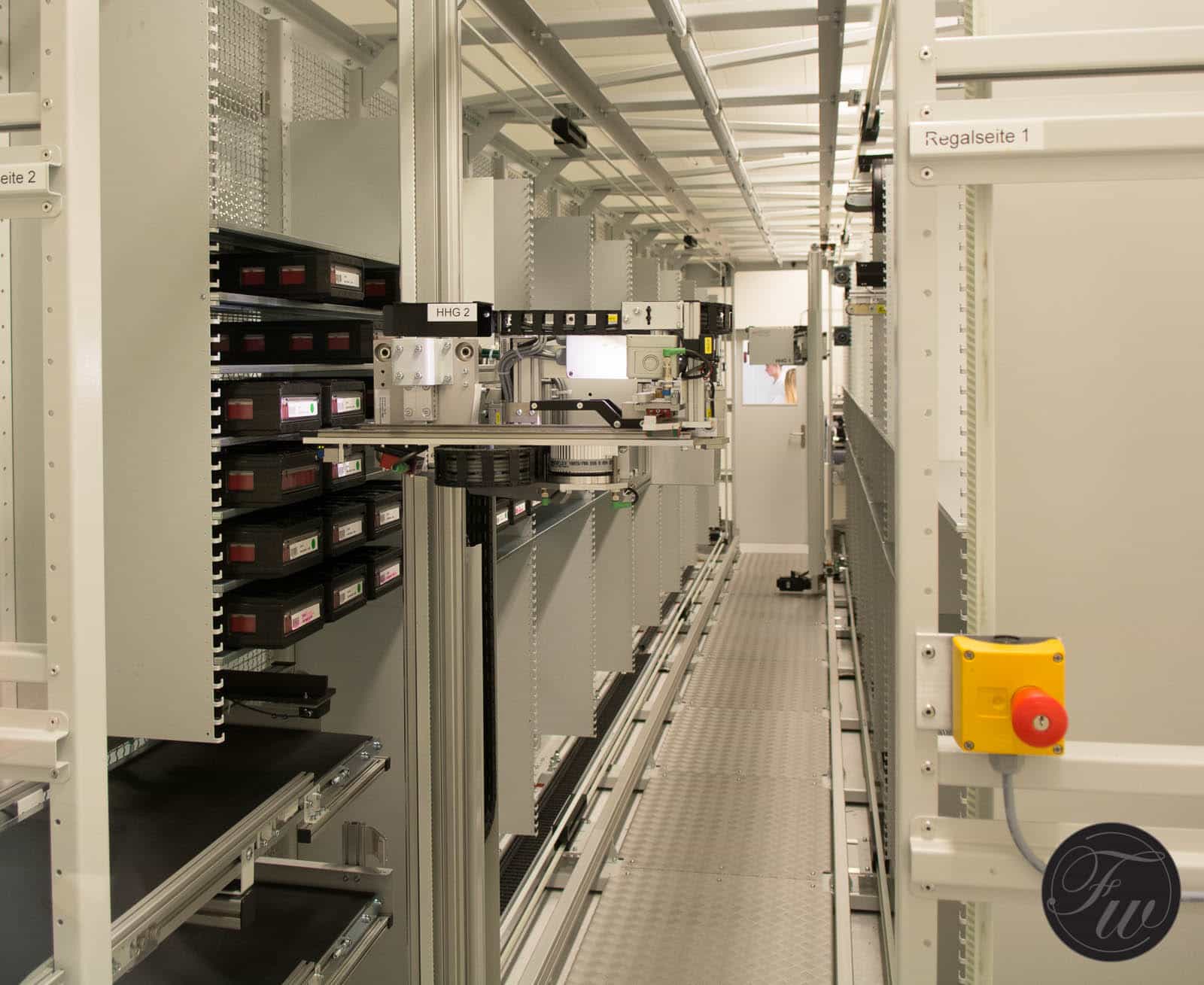
Two large compartments like this are used to do ‘end-user’ simulation in 23 degrees Celsius and 33 degrees Celsius. Before and after, deviation is being measured.
For now, the Master Chronometer is used first for the new Omega Globemaster collection. We covered this new collection earlier this year, click here. However, we received a Sedna gold Globemaster not too long ago to give it a spin for a couple of weeks and we will soon report our thoughts and findings on this piece.
Master Chronometer – Specifications
As written above, the Omega Globemaster will be the first timepiece to have Master Chronometer written on the dial (these watches will be delivered in phases to the Omega boutiques and retailers, starting first week of November). Later on, the De Ville Hour Vision and Seamaster PloProf in titanium will follow. Around the year 2020, most Omega watches with Co-Axial movements will be a Master Chronometer certified timepiece.
Besides the Chronometer certification by COSC, the Master part adds the following specifications:
THE EIGHT METAS APPROVED TESTS
1. AVERAGE DAILY PRECISION OF THE WATCH
This test runs over 4 days and checks the daily precision of the watch in real life wearing conditions. The watch is initially placed in six different positions and two alternating temperatures, then exposed to magnetism of 15,000 gauss, then demagnetized, then finally checked again in the same differing positions and temperatures. For each step, a photograph is taken of the watch and checked 24 hours later for accuracy against UTC time.
2. FUNCTION OF COSC-APPROVED MOVEMENT DURING EXPOSURE TO 15,000 GAUSS MAGNETIC FIELD
This test examines the movement of the watch only, placing it in two different positions, and subjecting it to a magnetic force of 15,000 gauss. During a time of 30 seconds in each position, the functioning of the movement is audibly checked using a microphone.
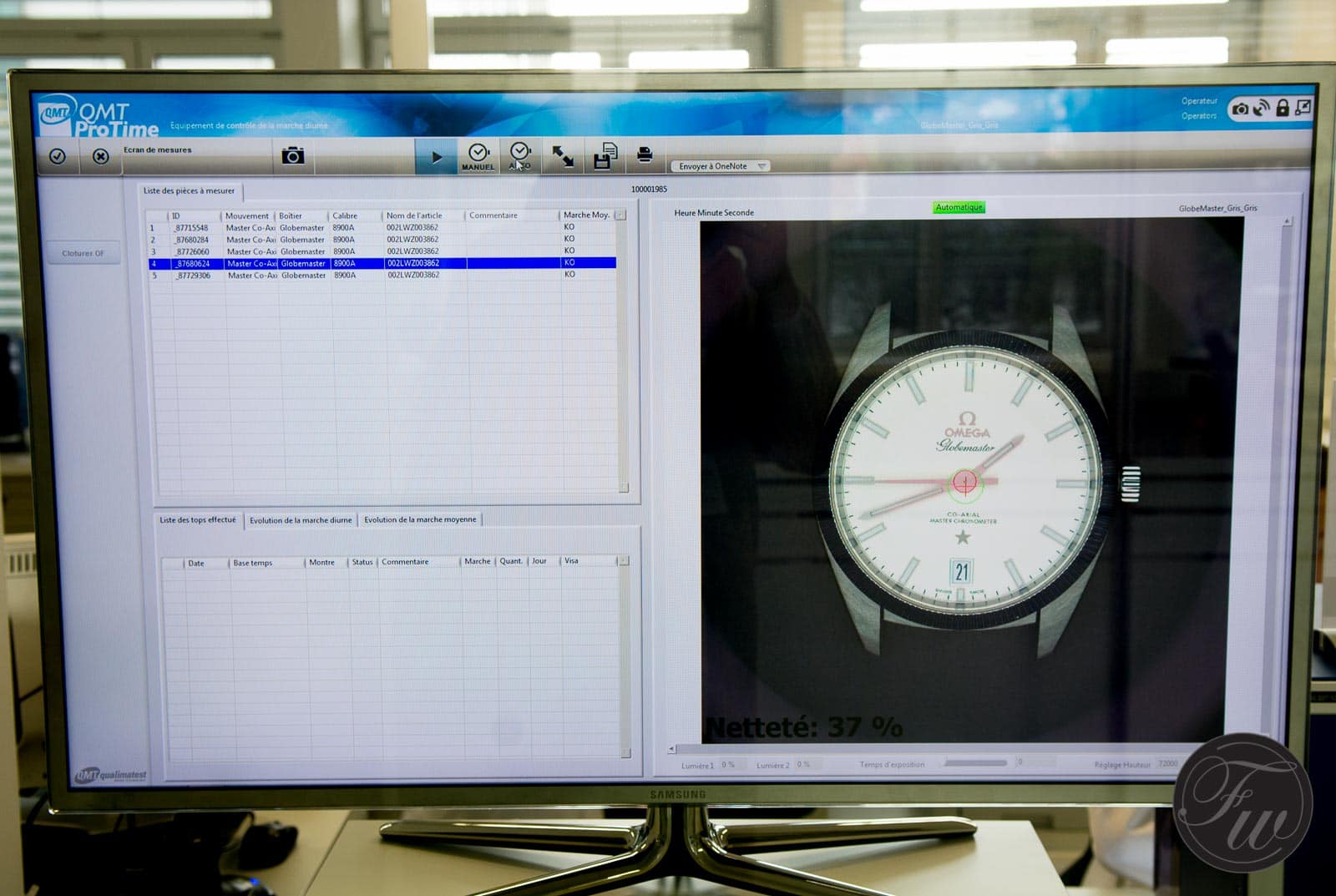
The accuracy of a watch is being measured and monitored using photo equipment and by ‘scanning’ the positions of the hands.
3. FUNCTION OF WATCH DURING EXPOSURE TO 15,000 GAUSS MAGNETIC FIELD
This test is similar to the second. On this occasion, instead of just the movement being tested, the entire watch is subjected to magnetic fields of 15,000 gauss, with the functioning being checked by way of audio. In today’s modern world, magnetism is all around us, in places such as tablets, phones, hairdryers and even the metallic clasps of women’s handbags. Mechanical watches without anti-magnetic innovation can suffer long-term effects in their accuracy when exposed to these magnetic fields.
4. DEVIATION OF DAILY PRECISION AFTER EXPOSURE TO 15,000 GAUSS MAGNETIC FIELD
This test works out the average deviation of the watch between day 2 and 3 of the first test. The result shows the daily precision of the watch before and after exposure to a magnetic field of 15,000 gauss.
5. WATER RESISTANCE
This test submerges the watch underwater, gradually applying more pressure up the point of the stated water resistance. For certain watches, it also goes beyond. This ensures that each watch is properly tested for underwater conditions.
6. POWER RESERVE
This test checks the power reserve of the watch by taking pictures at the beginning and end of the expected limit. Checking any deviation again, this proves that each watch functions accurately for its stated time. For wearers, it’s valuable to know that, even after a weekend on the bedside table, your watch will still be performing well.
7. DEVIATION OF RATE BETWEEN 100% AND 33% OF POWER RESERVE
This test puts the watch in six different positions, similar to each side of a dice. With the watch at full power, the watch spends 30 seconds in each position, with average precision recorded by way of audio . The power reserve is then reduced by two thirds and checked again, to ensure that precision is kept even when the watch is not at full power.
8. DEVIATION OF RATE IN SIX POSITIONS
This test is similar to the previous test, and checks for any deviation in the running time when the watch is placed in six different positions, similar again to each side of a dice. With 30 seconds in each position, the results are recorded through audio. By placing a watch in different positions, we can ensure a watch’s performance no matter what the wearer is doing, whether it’s sitting at a desk or actively playing sport.
What doest it mean for you, the consumer?
Good question ;). The Master Chronometer certification means that Omega does not only tell you that your watch is accurate, anti-magnetic and water resistant but that they actually guarantee that it is. This guarantee can only be given when their test work – including their processes – are audited and tested by an independent party, in this case that is METAS (and COSC). Consumers these days are critical enough to have doubts about slogans and on-liners that are being used in watch advertisements (I remember a Breitling advertisement not too long ago that stated ‘The best chronograph in the world’), but who actually does tell the truth? Initiatives like this will surely help consumers to rely on what a watch brand promises. If you are spending your hard-earned money on a watch, it better is a good one and one that will keep you company for many years to come.
Other brands have similar test procedures and standards, but they do not use any (independent) third party to actually do a certification. For me personally, I don’t rely on brands testing their own processes and work and have it certified by themselves. Certifying yourself doesn’t make much sense to be honest. I hope that other brands will follow and adopt the METAS certification and increase the trust that people can put into their watches.
During the press conference last Wednesday, Omega mentioned that the certification of their Master Chronometer watches would not be charged to the consumer. Of course, we can debate about that with the double price increase we had this year with Omega (one was due to the disconnect between the Swiss Francs and the Euro) in Europe but no separate increases have been made for the Globemaster since its introduction.
We will publish our in-depth Omega Globemaster review soon (with some stunning images taken by Bert, see below) and zoom into detail regarding the new Co-Axial Master Chronometer rated movements and its movement production facility in Villeret.
Of course, Hayek was the first to receive the Master Chronometer certified Omega Globemaster out of the hands from METAS. The plastic warranty card contains a unique code that you can use to look-up the test results of your specific watch (on-line).
More information can be found on the Omega website.
More images of the METAS Labs and press conference

